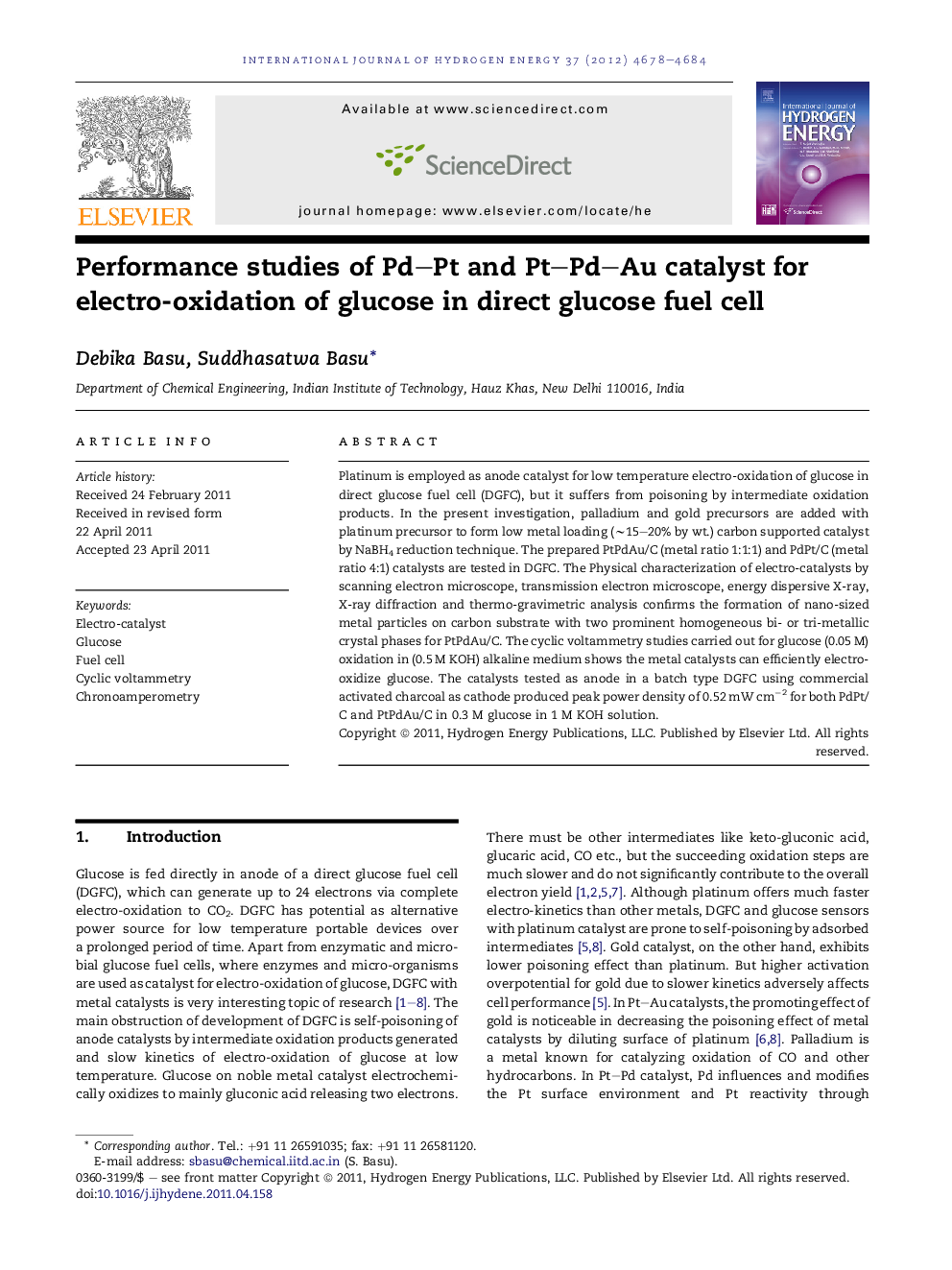| Article ID | Journal | Published Year | Pages | File Type |
|---|---|---|---|---|
| 1275532 | International Journal of Hydrogen Energy | 2012 | 7 Pages |
Platinum is employed as anode catalyst for low temperature electro-oxidation of glucose in direct glucose fuel cell (DGFC), but it suffers from poisoning by intermediate oxidation products. In the present investigation, palladium and gold precursors are added with platinum precursor to form low metal loading (∼15–20% by wt.) carbon supported catalyst by NaBH4 reduction technique. The prepared PtPdAu/C (metal ratio 1:1:1) and PdPt/C (metal ratio 4:1) catalysts are tested in DGFC. The Physical characterization of electro-catalysts by scanning electron microscope, transmission electron microscope, energy dispersive X-ray, X-ray diffraction and thermo-gravimetric analysis confirms the formation of nano-sized metal particles on carbon substrate with two prominent homogeneous bi- or tri-metallic crystal phases for PtPdAu/C. The cyclic voltammetry studies carried out for glucose (0.05 M) oxidation in (0.5 M KOH) alkaline medium shows the metal catalysts can efficiently electro-oxidize glucose. The catalysts tested as anode in a batch type DGFC using commercial activated charcoal as cathode produced peak power density of 0.52 mW cm−2 for both PdPt/C and PtPdAu/C in 0.3 M glucose in 1 M KOH solution.
► PtPdAu/C and PdPt/C catalysts were synthesized for glucose electro-oxidation. ► XRD studies show alloy formation for PdPt/C and two homogeneous phases for PtPdAu/C. ► Direct glucose fuel cell was operated using both catalysts as anode. ► 0.52 mW cm−2 power density obtained for 0.3 M glucose in 1 M KOH for both anodes. ► PtPdAu/C anode delivered more stable cell performance than that of PdPt/C.
